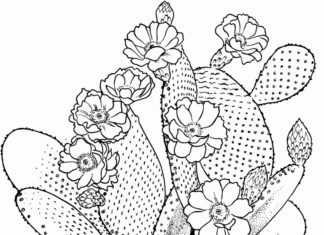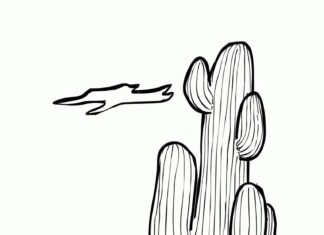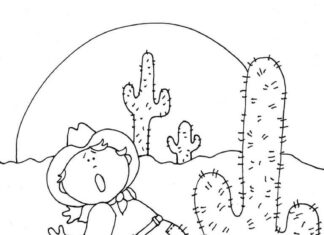Cacti are a group of succulents, or plants that store water in their tissues, which allows them to survive in dry and harsh environments.
Cactus Coloring Book
information
- Characteristics: Cacti are known for their distinctive appearance, which includes thick, fleshy stems, spikes or needles, and sometimes showy flowers.
- Habitat: Most cacti are found in desert and arid areas, although they can also be found in other environments, such as savannas, dry forests and mountainous areas.
- Adaptations to Dry Conditions: Cacti have adapted to living in dry environments, including by reducing the surface area of their leaves (which are usually reduced to spikes) and their ability to store water in their fleshy stems.
- Spikes: The spikes on the cacti serve a protective function, helping to reduce water evaporation and prevent animals from over-consuming the plant.
- Flowers: Despite their harsh habitat, many species of cacti thrive and produce beautiful and colorful flowers. These flowers attract pollinating insects.
- Edibility: Some species of cacti are edible and are part of the traditional diet of some peoples, especially in Latin America.
- Cultural Applications: Cacti play an important role in the culture, art and symbolism of some communities, especially in desert regions.
- Environmental Protection: Some cactus species are endangered due to habitat loss, illegal trade and collecting. There are efforts to protect and preserve them.
- Gardening Hobby: Cacti are also popular ornamental plants for home cultivation. Many people grow them as an ornamental because of their unique appearance and ability to survive in adverse conditions.
trivia
- World's Largest Cactus: Saguaro (Carnegiea gigantea) is one of the largest cacti in the world. It can reach an impressive height of up to 18 meters. The sight of saguaros in the U.S. Saguaro National Park in Arizona is characteristic of the desert landscape.
- Water in Cacti: Water in cacti is stored in the fleshy tissues of the stems. The ability to store water allows them to survive long periods of drought.
- Spikes and Needles: Although the terms "thorns" and "needles" are often used interchangeably, technically, "thorns" are transformed leaves and "needles" are modified stems.
- Slow Growth: Cacti grow relatively slowly. Some species can take decades to reach a significant size.
- Nocturnal Flowers: Many species of cacti bloom at night, and their flowers are adapted to attract nocturnal pollinators such as moths.
- Cactus Festival: In Mexico, there is a holiday known as "Día de la Candelaria" (St. Candelaria Day), which is celebrated by people who receive cacti from their homes as part of a tradition.
- Edible Cacti: Some species of cacti are edible and are part of the cuisine of some regions, especially in Mexico. Nopal (Opuntia) cacti are popular as an edible vegetable.
- Symbolism: Cacti are sometimes used as symbols of perseverance, courage and survival in harsh conditions. Their ability to grow and flourish in harsh environments is often interpreted as a metaphor for human character.
- Variety of Forms: Cacti come in a variety of shapes and sizes, from low and circular to tall and columnar. Their diversity is impressive.
- Threats to Species: Some cactus species are threatened with extinction due to human activities, including illegal trade and destruction of their natural habitats.








